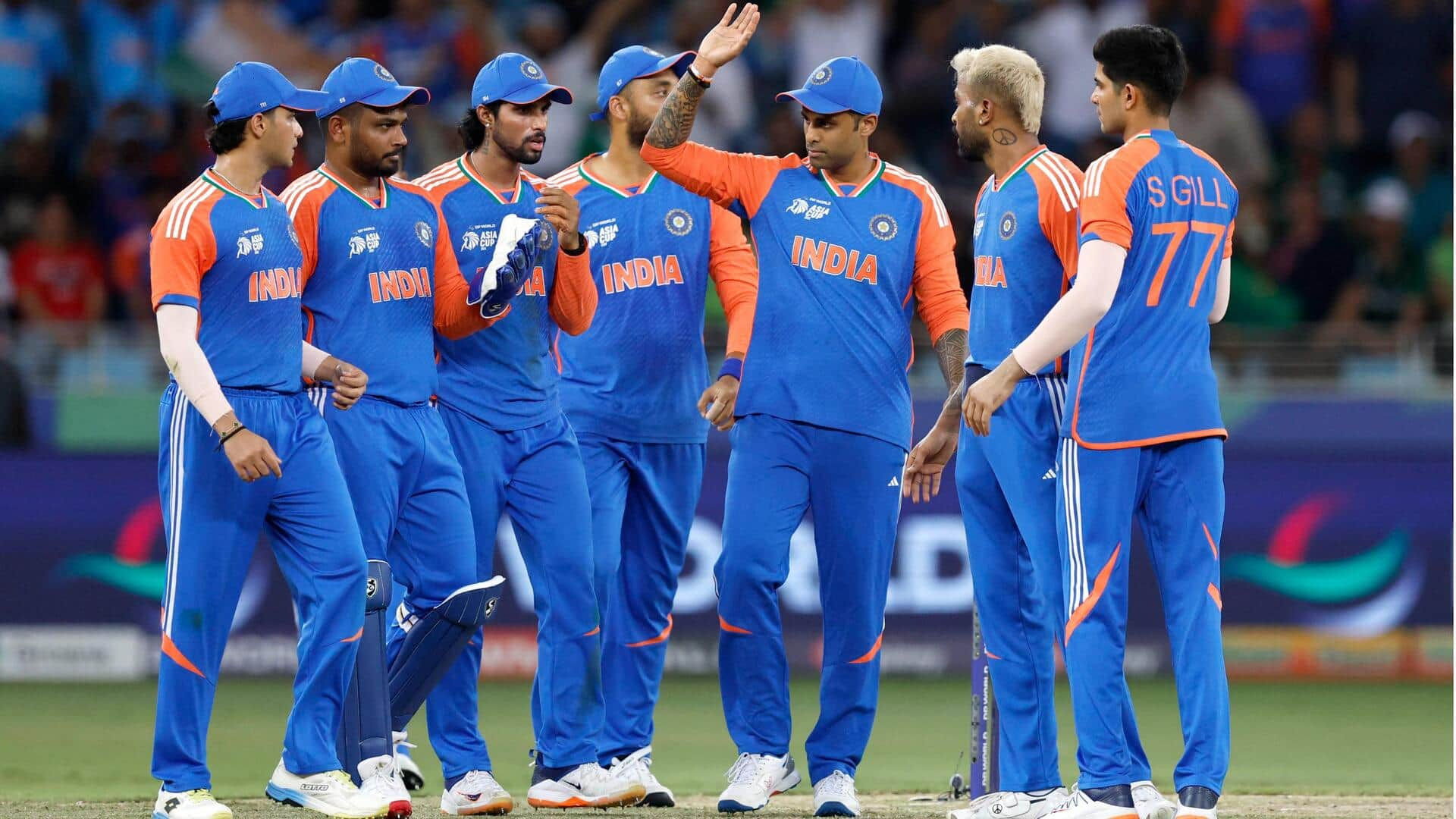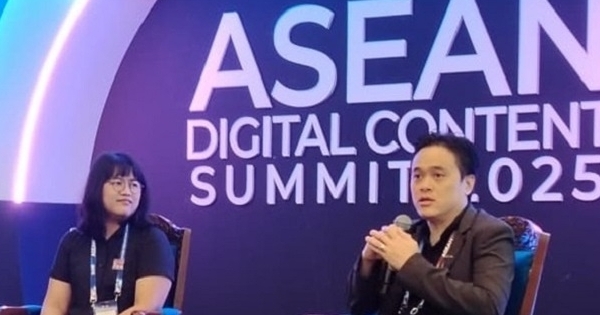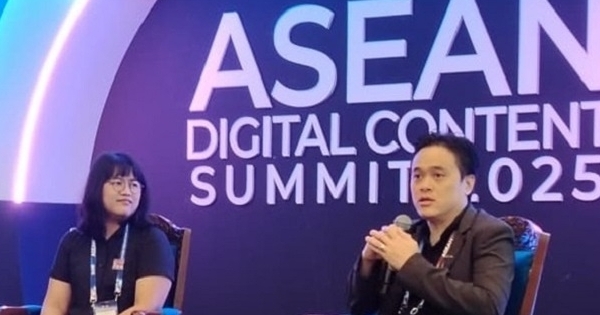Ahead of the 2025 Men’s T20 Asia Cup Super Four clash, Bangladesh head coach Phil Simmons has said that any team can beat India.
Harry Brook named England’s vice-captain for Ashes: Details here
England have announced Harry Brook as the new vice-captain for the impending Ashes series against Australia.
ASEAN Digital Content Summit 2025: Region’s games industry needs fewer silos, more collaboration and shared talent
Industry is at another transition period, region needs to seize moment to benefit from it Indonesia’s asso wants to see support for small studios in region to fund prototype development & market testing Despite many layoffs and Triple-A flops, and the negative perception of the gaming industry, guess what? Sales are just going up, said Saranpat Sereewiwattana, vice president of the Thai Game Software Industry Association. Saranpat was speaking on the Associations Driving Industry Synergy panel at the ASEAN Digital Content Summit in Johor Bahru that was held from Sept 3-7. The session was moderated by Don Baey, the Chairperson of Singapore Games Association, with Saranpat Sereewiwattana, vice president of the Thai Game Software Industry Association and Ken Natasha, Operations and Strategic Partnership Manager at Asosiasi Game Indonesia (AGI). He believed that Southeast Asias next step in the games development sector is simple: collaborate more, especially on talent. Generative AI is already lowering the cost of making games and ASEAN should seize the moment. With the production part of the game offloaded to AI with human supervision, ASEAN gaming studios can reallocate their talent from the production part to the ideas and design part of any game they want to create. We are now at another transition period in the gaming and animation industry, like what happened in the past with the launch of the App Store and the introduction of Unity and Unreal Engine as platforms for games development. ASEAN companies need to seize the moment and benefit from the current disruption before things settle into a new status quo and any opportunity to seize the advantage is gone. Indonesia: big market, micro gaming, animation workforce Saranpats fellow panellist Ken Natasha, Operations and Strategic Partnership Manager at Asosiasi Game Indonesia (AGI), noted a stark gap between audience size and the makers in her market. We have almost 300 million people, and there are only like 3, 000 people who work in the Indonesian video game industry, she said. While she estimates the gaming sector to be around 20 years old, growth only began after 2016, with two or five new studios coming up a year, now rising to between 10 and 20 new studios a year recently. One reason for this is because no large gaming company set up operations in Jakarta, bringing with it best practice knowledge and games development expertise that the local talent pool could learn from and be inspired by. Everyone had to self-learn, she said. Funding has always been a big big challenge for us she acknowledges. And while Indonesias Ministry of Creative Economy does its best and offers some funding support, this isnt even enough to fund development of a prototype. On ASEAN collaboration, she would like to see support for small studios in the region to fund prototype development and market testing. I think that would be awesome. Collaborate, learn from each other Saranpat wholeheartedly agreed. We should come together and think about ASEAN more as one group of people. Countries have backed games at different times and in different ways, so learning from one another should be the starting point. Instead of doing things in silos, we need to collaborate in terms of talent development, to help [young people] anticipate and understand how things are going to be. One huge problem he sees is that the industry training curriculum lags the market. Students spend years learning what the industry is supposed to need, only to graduate into a different world. We can at least connect them to relevant people, and learn from one another, he said, offering a program in Thailand as an example. The country has run a national gaming and animation pipeline over the past four years, where students submit class projects and compete at national level, including at Gamescom Asia. They can get to know other participants from across ASEAN or beyond, and learn from industry professionals regarding how things are going to be after they graduate, Saranpat said. Selling the industry to talent Ken agreed the bigger challenge is attracting talent in the first place. The video game industry is not as sexy as the IT industry. We really need to make young people feel comfortable with the industry first, because if you dont know the industry, then you wont love the industry. Because mainstream education rarely covers how the industry works, students will only learn outside school by joining a game gym where they gain practical experience. Within a year, successful participants can form their own studios and join industry events like the Indonesia Game Developer eXchange (IGDX), an annual event hosted by the Ministry of Communication and Digital. With all the speculations and predictions over AIs ultimate impact and funding and talent gaps in the region, Ken admits to not having any answers but stressed the importance of adapting and landing on ones feet. I have no idea how all this uncertainty is going to turn out, but we know that this is happening now. And, the most important thing is that we need to find ways to be on top. Clearly the various ASEAN gaming and animation associations have a key role to play in helping the ecosystem land on its feet. But who will step up to take the lead?.
FIVB Men’s World: Czechia through to first quarterfinal since 1986
MANILA, Philippines — Czechia ended a quarterfinal drought in the FIVB Volleyball Men’s World Championship after ousting Tunisia, 25-19, 25-18, 25-23, on Tuesday at Mall of Asia Arena. The Czechs turned to the trio of Patrik Indra, Jan Galabov, and Lukas Vasina to set up a duel with either Serbia or Iran in the top
ASEAN Digital Content Summit 2025: Region’s games industry needs fewer silos, more collaboration and shared talent
Industry is at another transition period, region needs to seize moment to benefit from it
Indonesia’s asso wants to see support for small studios in region to fund prototype development & market testing
“Despite many layoffs and Triple-A flops, and the negative perception of the gaming industry, guess what? Sales are just going up,” said Saranpat Sereewiwattana, vice president of the Thai Game Software Industry Association. Saranpat was speaking on the “Associations Driving Industry Synergy” panel at the ASEAN Digital Content Summit in Johor Bahru that was held from Sept 3-7. The session was moderated by Don Baey, the Chairperson of Singapore Games Association, with Saranpat Sereewiwattana, vice president of the Thai Game Software Industry Association and Ken Natasha, Operations and Strategic Partnership Manager at Asosiasi Game Indonesia (AGI).
He believed that Southeast Asia’s next step in the games development sector is simple: collaborate more, especially on talent. Generative AI is already lowering the cost of making games – “and ASEAN should seize the moment.”
With the production part of the game offloaded to AI with human supervision, ASEAN gaming studios can reallocate their talent from the production part to the ideas and design part of any game they want to create.
“We are now at another transition period in the gaming and animation industry, like what happened in the past with the launch of the App Store and the introduction of Unity and Unreal Engine as platforms for games development.”
ASEAN companies need to seize the moment and benefit from the current disruption before things settle into a new status quo and any opportunity to seize the advantage is gone.
Indonesia: big market, micro gaming, animation workforce
Saranpat’s fellow panellist Ken Natasha, Operations and Strategic Partnership Manager at Asosiasi Game Indonesia (AGI), noted a stark gap between audience size and the makers in her market. “We have almost 300 million people, and there are only like 3,000 people who work in the Indonesian video game industry,” she said. While she estimates the gaming sector to be around 20 years old, growth only began after 2016, with “two or five” new studios coming up a year, now rising to “between 10 and 20 new studios a year” recently.
One reason for this is because no large gaming company set up operations in Jakarta, bringing with it best practice knowledge and games development expertise that the local talent pool could learn from and be inspired by. “Everyone had to self-learn,” she said.
Funding has always been a “big big challenge for us” she acknowledges. And while Indonesia’s Ministry of Creative Economy does its best and offers some funding support, this isn’t even enough to fund development of a prototype.
On ASEAN collaboration, she would like to see support for small studios in the region to fund prototype development and market testing. “I think that would be awesome.”
Collaborate, learn from each other
Saranpat wholeheartedly agreed. “We should come together and think about ASEAN more as one group of people.” Countries have backed games at different times and in different ways, so learning from one another should be the starting point. “Instead of doing things in silos, we need to collaborate in terms of talent development, to help [young people] anticipate and understand how things are going to be.”
One huge problem he sees is that the industry training curriculum lags the market. Students spend years learning what the industry is supposed to need, only to graduate into a different world. “We can at least connect them to relevant people, and learn from one another,” he said, offering a program in Thailand as an example.
The country has run a national gaming and animation pipeline over the past four years, where students submit class projects and compete at national level, including at Gamescom Asia. “They can get to know other participants from across ASEAN or beyond, and learn from industry professionals regarding how things are going to be after they graduate,” Saranpat said.
Selling the industry to talent
Ken agreed the bigger challenge is attracting talent in the first place. “The video game industry is not as sexy as the IT industry. We really need to make young people feel comfortable with the industry first, because if you don’t know the industry, then you won’t love the industry.”
Because mainstream education rarely covers how the industry works, students will only learn outside school by joining a ‘game gym’ where they gain practical experience. Within a year, successful participants can form their own studios and join industry events like the Indonesia Game Developer eXchange (IGDX), an annual event hosted by the Ministry of Communication and Digital.
With all the speculations and predictions over AI’s ultimate impact and funding and talent gaps in the region, Ken admits to not having any answers but stressed the importance of adapting and landing on one’s feet. “I have no idea how all this uncertainty is going to turn out, but we know that this is happening now. And, the most important thing is that we need to find ways to be on top.”
Clearly the various ASEAN gaming and animation associations have a key role to play in helping the ecosystem land on its feet. But who will step up to take the lead?
Khaman dhokla: A must-try street breakfast
Khaman dhokla, a popular street breakfast from India, is a soft, spongy cake made from fermented gram flour.
How to improve your writing skills
Creative writing exercises can be an effective way to boost creativity and improve writing skills.
Accenture plans to create 12,000 jobs in Andhra Pradesh
Accenture, a leading tech consultancy firm, has proposed to set up a new campus in Andhra Pradesh.
Akshay Kumar slams AI videos of him in Valmiki’s role
Bollywood star Akshay Kumar has slammed the use of artificial intelligence to generate clips showing him as Maharishi Valmiki.









